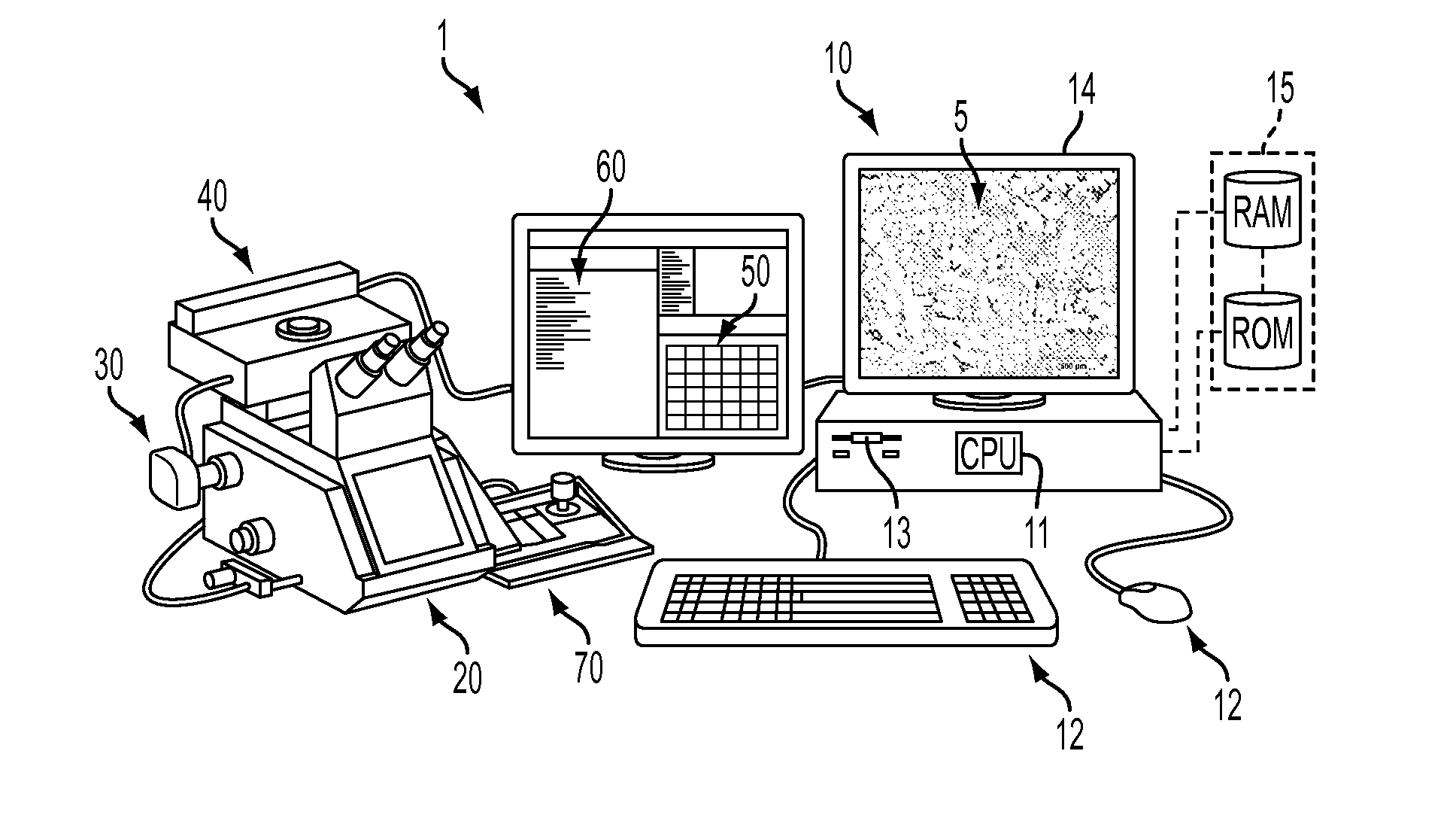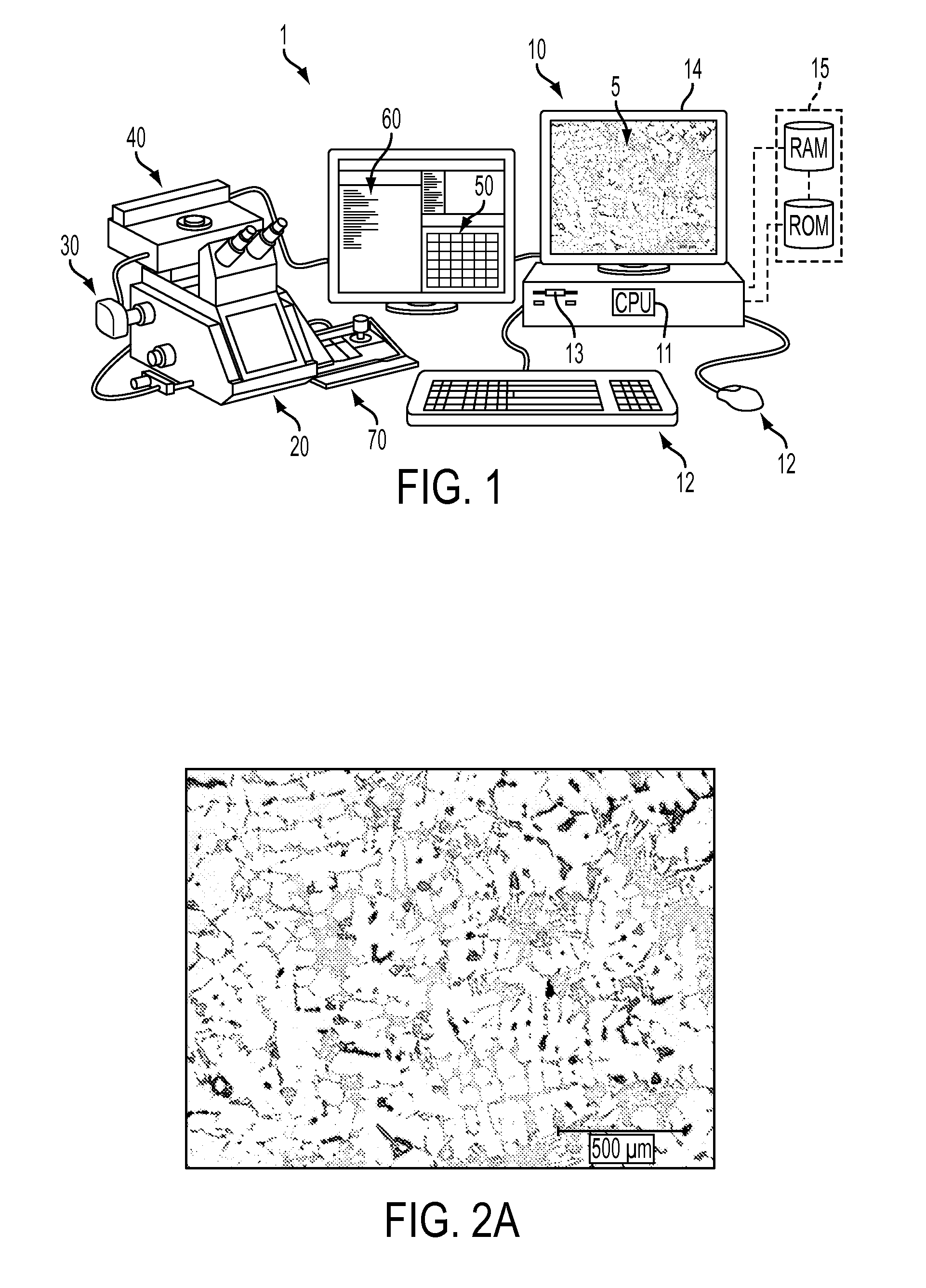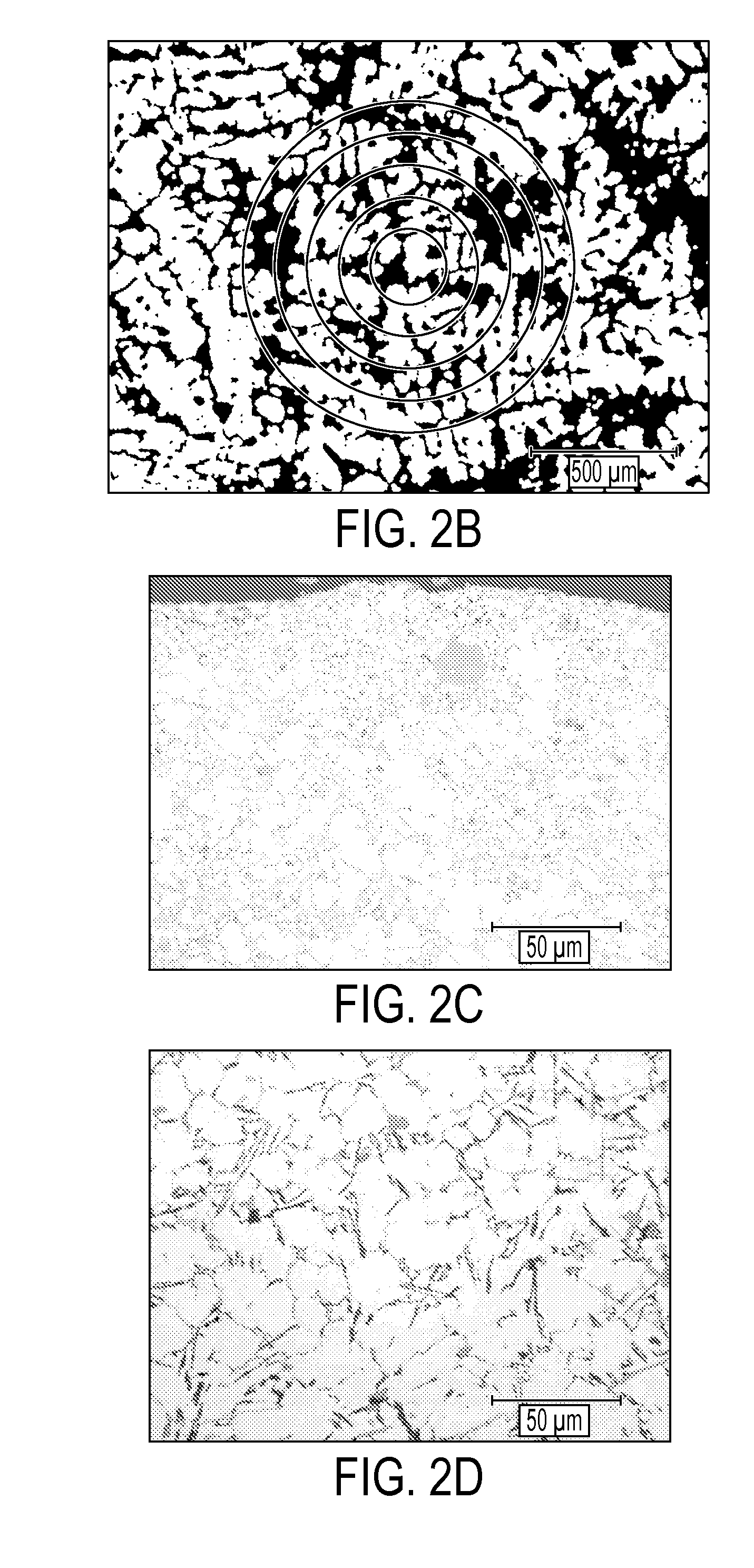Method to determine skin-layer thickness in high pressure die castings
a technology of high-pressure die casting and skin layer thickness, which is applied in the field of quantitative understanding of skin layer thickness in high-pressure die casting (hpdc) aluminum alloys, can solve the problems of unrealistic prediction of component structural properties, parts are not amenable to heat treatment, and hpdc presents unique design challenges, so as to reduce the solute diffusion rate, improve microstructure and related reliability, and accurate quantitative understanding of skin layer thickness
- Summary
- Abstract
- Description
- Claims
- Application Information
AI Technical Summary
Benefits of technology
Problems solved by technology
Method used
Image
Examples
Embodiment Construction
[0025]Referring first to FIG. 1, an automated way to measure eutectic phases may be performed on a digital computer or related electronic device configured as an image analysis (IA) system 1; such a system may also be referred to as an image analyzer system, image analyzer or the like. In situations where system 1 is computer-based in the manner discussed below (as well as suitable variants thereof), it is referred to as having a von Neumann architecture. Likewise, a particularly-adapted computer or computer-related data processing device that employs the salient features of such an architecture in order to perform at least some of the data acquisition, manipulation or related computational functions, is deemed to be compatible with the method of the present invention. It will be appreciated by those skilled in the art that computer-executable instructions that embody the calculations discussed elsewhere in this disclosure can be made to achieve the objectives set forth in the prese...
PUM
| Property | Measurement | Unit |
|---|---|---|
| thickness | aaaaa | aaaaa |
| depths | aaaaa | aaaaa |
| volume fraction | aaaaa | aaaaa |
Abstract
Description
Claims
Application Information
 Login to View More
Login to View More - R&D
- Intellectual Property
- Life Sciences
- Materials
- Tech Scout
- Unparalleled Data Quality
- Higher Quality Content
- 60% Fewer Hallucinations
Browse by: Latest US Patents, China's latest patents, Technical Efficacy Thesaurus, Application Domain, Technology Topic, Popular Technical Reports.
© 2025 PatSnap. All rights reserved.Legal|Privacy policy|Modern Slavery Act Transparency Statement|Sitemap|About US| Contact US: help@patsnap.com



